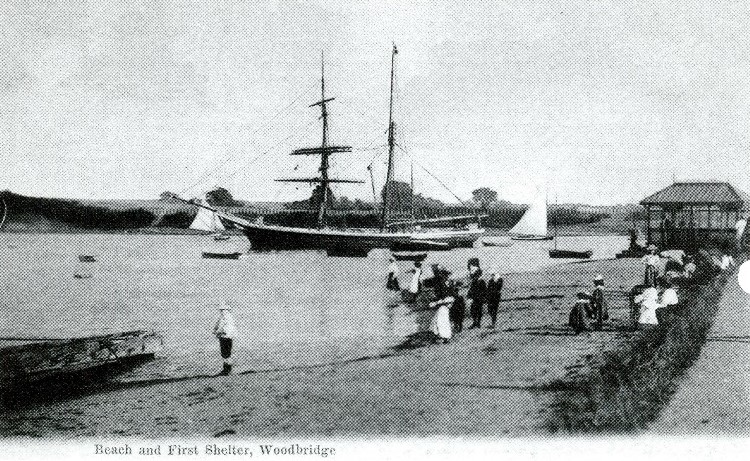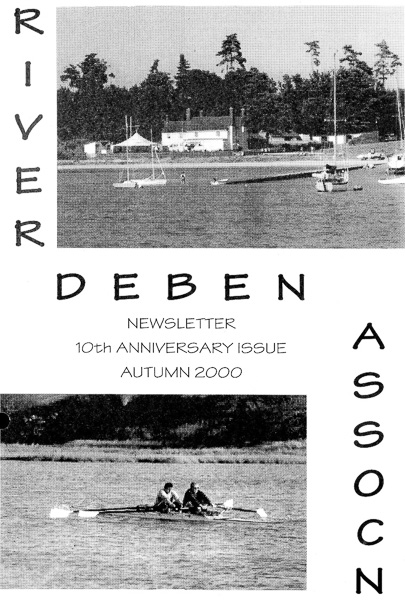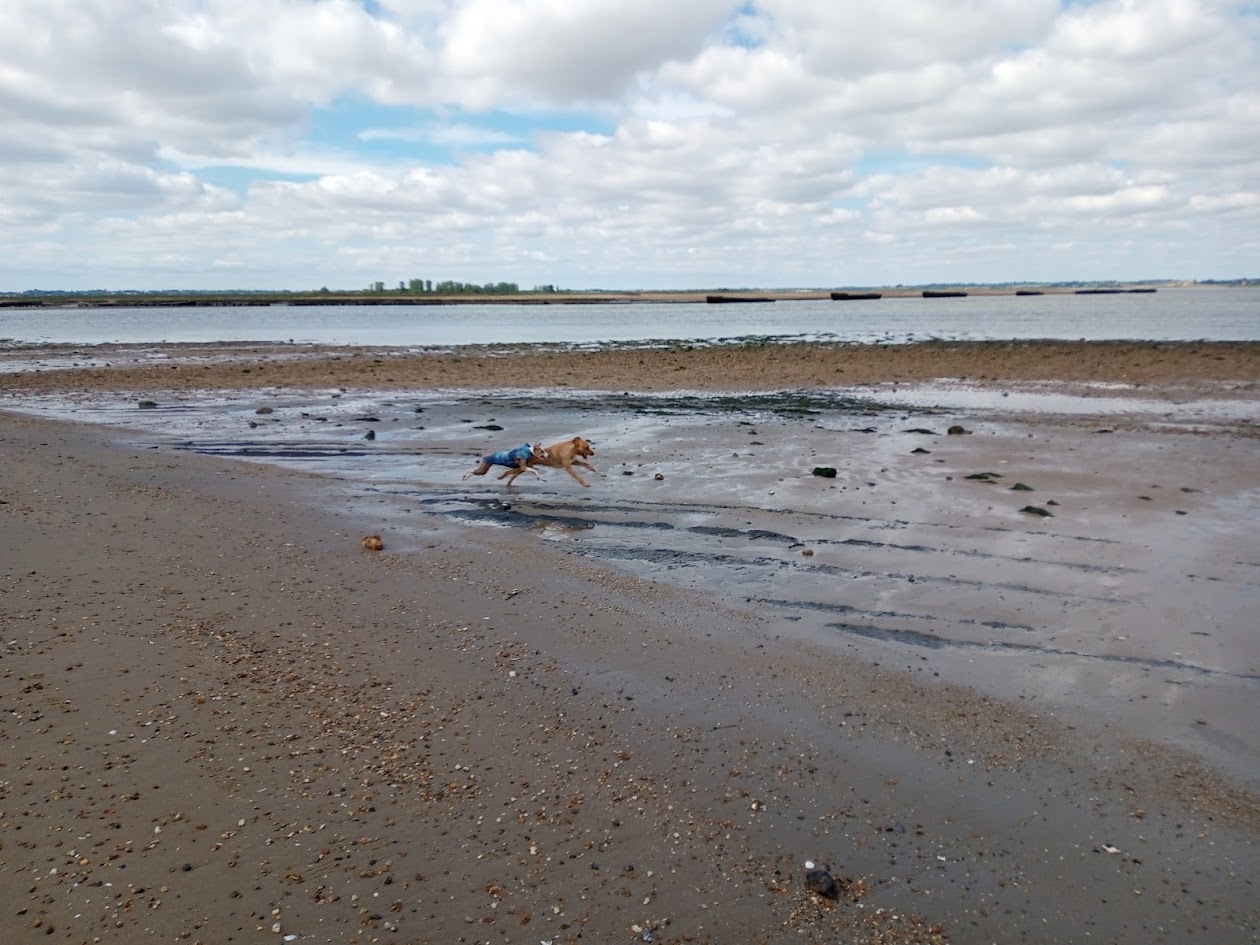by Bertie Wheen
If you haven’t read the first post in this series, may I direct you to Once Upon a Time…? What follows will make much more sense with its context, but the TL;DR is that I’ve been improving the accessibility of our Magazine page (which hosts digital versions of our biannual magazine, née newsletter) by indexing the old editions – or, more accurately, contentsing, but that somehow doesn’t have the same ring to it. Last time I had indexed the 1990s, and I’ve now done the same for the 2000s. I’d like to recommend that, better than reading these accompanying posts, you read the magazines/newsletters themselves. (I promise it’s a more interesting thing to do than you might imagine!)
To the uninitiated, The Deben might appear to be an unassuming little publication, but it has been consistently produced since 1990 (which was, though I’m sure you won’t want to hear it, over 30 years ago), and from the start it has been filled with articles that were not only interesting to contemporary readers, but – as I have been discovering by going through the back catalogue – still are today! Many are presciently relevant, and others are historically significant; there are contributions from then that read like they were written now, and there are others that could only have been written then, including reminiscences from those who had known the Deben the longest, and who shared some of their memories of it from deep time – from times that now few, if any, are old enough to remember. I’m incredibly glad that the latter are preserved in our archives, and I think the former speaks to the environmental consciousness that we have as a community, which we have had since long before the recent general awareness of such issues. I should add that there are still more articles that don’t necessarily fit into either of these categories, but that are worth a modern reader’s time. One of the joys of The Deben, or the RDA Newsletter as it was then, is the strange, quirky pieces that appear in it. Perhaps they might not be everyone’s style, but they don’t need to be. They are the variety and flavour that turned what could otherwise have been a dry document containing nothing but committee meeting minutes and end-of-year accounts (both of which were included in the Newsletter days) into something rather charming. There are some wonderful weirdos on this river, and it would be worse without them.
Not just weirdos though. In Anni Healey’s piece for the 10th Anniversary issue about how the Association started (from which I learnt various things, including that at one point there was nearly a Ferris wheel on the Deben!), she describes the steering committee of the first Public Meeting as being “made up of people with diverse interests, many talents, strong opinions and above all – stamina”. I’m sure I’m not the only one who thinks that these are qualities we’ve managed to maintain in the years since, and not just in our committee – in our membership as a whole. I’ve had the pleasure of typesetting the last 5 editions of The Deben, and the diversity of talent has been obvious in every issue (as has the strength of opinion!), but it’s this indexing that shows me the level of stamina some of our members have. If you look back through these old issues and compare them to the new, you’ll notice that though most of the names have changed, there were people contributing then who still do today. Some shout-outs are due, in no particular order, to: Robert Simper, Robin Whittle and Claudia Myatt. You’ll also notice that there have been many people in the history of the publication who have been absolute stalwarts, contributing much over many years. The early noughties sadly saw the deaths of two such: Colonel Ian Howard Battye, who was the first chairman, and Anni Healey, who in early 1991 succeeded him (and became the first chairwoman, though its not a term the RDA has used – all of our chairpeople have been called chairman). Both of them were forces for good within the Association (and more generally), and are to thank for many of the early articles. Ian Battye died on 19th July 2001 at the age of 83, and received tributes in the Autumn 2001 issue, including a very good one from Anni Healey, who noted (amongst other things) that he used East Coast tide tables as his diary! (An idea that I think has some merit.) Anni herself died, after a long battle with cancer, on her 34th wedding anniversary in 2004, when she was only 60. There is, in Woodbridge, an Anni Healey Close that was named in her memory the following year – but only after quite a fight between the town council, which she had served on and which suggested the naming, and the district council, which she had also served on since 1991 (including a stint as chairman between 1997-8). As well as chairing the RDA from 1991 to 1993, she was, as Denzil Cowdry pointed out in his Spring 2005 tribute to her, “an active committee-member for more than 15 years”. (Denzil, as many people will know, died on 9th August 2021 at 93, and was himself a legend of the Association. An obituary from his son Miles appeared in the Autumn 2021 edition.)
By the way, in that same issue (Autumn 2000) there’s an absolutely wonderful article (but be warned, it is a bit blasphemous) from Yachting Monthly’s John Passmore on the highs and lows of mud. His experiences will ring familiar for many; for me, it was the one at Walton that brought back particularly painful memories. Readers who haven’t read Old Man Sailing may be interested to know that, in more recent times, John set off from the Backwaters on a 6-week, 3,629-mile solo voyage (to the Azores via Shetland!) to avoid the March 2020 lockdown. (And if you read his blog of the same name – oldmansailing.com – you’ll know that he is, even as we speak, continuing to have adventures of similarly epic proportions.)
The next one features David Clarke describing the past and (then) present of the world-famous(!) “Town Quay Café” (now known as the Caravan Café – though as those who’ve seen the proposed replacement, slated for construction next year, will know, probably not for much longer!), which I as a lifelong customer particularly loved. (Did you know that the original Café was “a temporary structure on large agricultural wheels […] built by Frank Knights in his boatyard in 1948”?)
Spring 2002 saw a storm of discussion on proposed developments at Whisstocks, where Howard Homes wanted to built some very expensive housing. “A large majority of [the] Committee [were] opposed”, and had “sent in a statutory objection, in strong terms, to the Public Enquiry Office”, but “before the enquiry in late November […] would like to determine the views of as many members as possible, however opposite”. There were articles arguing both for and against, and a voting slip and request for opinions. While walking through Whisstocks today, you’ll notice not only that the proposals were successfully stopped, but that there have instead been various other developments. Interestingly (at least for me, for older members this may well be old news), these were gestating then as part of a counter-proposal, “the commercial heart of [which would] be a modern combined restaurant, and a pub, café, wine bar, etc.” (Sound familiar?)
Chris Brown, who was the RDA’s treasurer at the time – and, in fact, filled the role for over a decade (I’m not sure exactly when his tenure began, but it was either mid/late 2001 or early 2002, and it ran until mid 2012!) – had added a “Note from your Treasurer” to the previous issue (Autumn 2002), and did the same in this one, starting it:
“Another note from your Treasurer. I do not intend to make this a regular feature but […]”
And, having written such obviously famous last words, inevitably reappeared in the subsequent edition with:
“Yet another note from your Treasurer. The last newsletter contained a promise that I would not make the ‘note from your treasurer’ a regular feature. This is still my intention but I am left with no alternative this time.”
Things don’t seem to have been going to plan around then… the same newsletter included the first installment of a series that, in the end, only ran to one item: Weaver’s Woodbridge (written by Michael Weaver). It’s a shame that it didn’t continue. In it, he admits that “this IS a ramble”, and it is, but it’s a very enjoyable one. In amongst his own rambling are some quotes I hadn’t heard – for example this one, which I’ll let him introduce:
“History oozes from the Deben mud, 2000 years of it. Saxon invasions; mediaeval counter-invasions – attacks on France; a tilt at the Armada; ship-building for Crown and Commonwealth; trading and smuggling, the haven for sailing champions and round-the-world sailors. Remarkably the river has not changed its essential character and ‘look’. Here’s Alker Tripp, writing in the 1930s:
‘Up the river Deben, from the windswept shingle banks and tidal flats, the mariner searches his way by a winding channel, and the fields and woods close about him and replace the long sea-horizons. Landing at Woodbridge at high water he has approached the same fairway as the adventurers and traders of the middle ages, … an old-world fairway, that is now as then it was. This is a spot that is very England.’ ”
As well as the quotes, there are one or two old photos. This one is particularly startling:
 From page 16 of the RDA Newsletter, Autumn 2003:
From page 16 of the RDA Newsletter, Autumn 2003:
This picture must have been taken at the turn of the century or slightly earlier – ladies, note the clothes! It appears by no means high water yet a substantial trading brig is afloat; there is a Una boat behind her which was much a fashion of the day inherited from the USA. A postcard by A Fairweather of Woodbridge, when a postcard cost ½d to send – it was printed in Germany! Michael Weaver’s collection.
There was then a new editor: Nick Wright, who produced the next 5 years of the Newsletter. He had been going to take over from Michael Atkins at the turn of the millennium, but then decided to go to Malawi for a couple of years instead, and thus David Copp filled the post. This I learnt from Michael Atkins’s contribution that edition, titled “Reminiscences of Deben Reminiscences”, which I mention because in it I’m sorry to say he puts me to rights on who the earliest reminiscences were from. In “Once Upon a Time…” I said it was his wife Jill, who out-did him (his earliest were from 1954) by going back to 1928, but she was herself out-done:
“The earliest, from Joan Brown, daughter of Sir Clifford Patterson [sic], the first President of Waldringfield Sailing Club, recalled, through the eyes of a child, Waldringfield as it was some 80 to 90 years ago [relative to Spring 2004] when, as she says, there were only two moorings on the river, and one dinghy and two duck punts on the beach.”
I think I missed it as a result of rushing. I’m glad to have found it. I remember seeing it, but I must have only skimmed the title and the author for the contents list and not actually read it, and as a result totally missed its significance. I know my last post was about the nineties, and this is supposed to be about the noughties, but it’s an amazing article and I recommend you don’t make the same mistake as I did: It’s on page 4 of #19 (Autumn 1999). (Incidentally, when I was a child I think I found the “fascinating little paths” she mentions.)
There’s a lot more I could (and perhaps should) mention, but I’m afraid I have again run out of time (which was the cause of that rushing), and thus this post is going to be a two-parter.
Read the next post – News from the Noughties, Part II – out now!
Bertie Wheen
Bertie Wheen is the typesetter (and now indexer) of The Deben, and a liveaboard (along with two dogs, Solo and Nellie) on the Deben.


